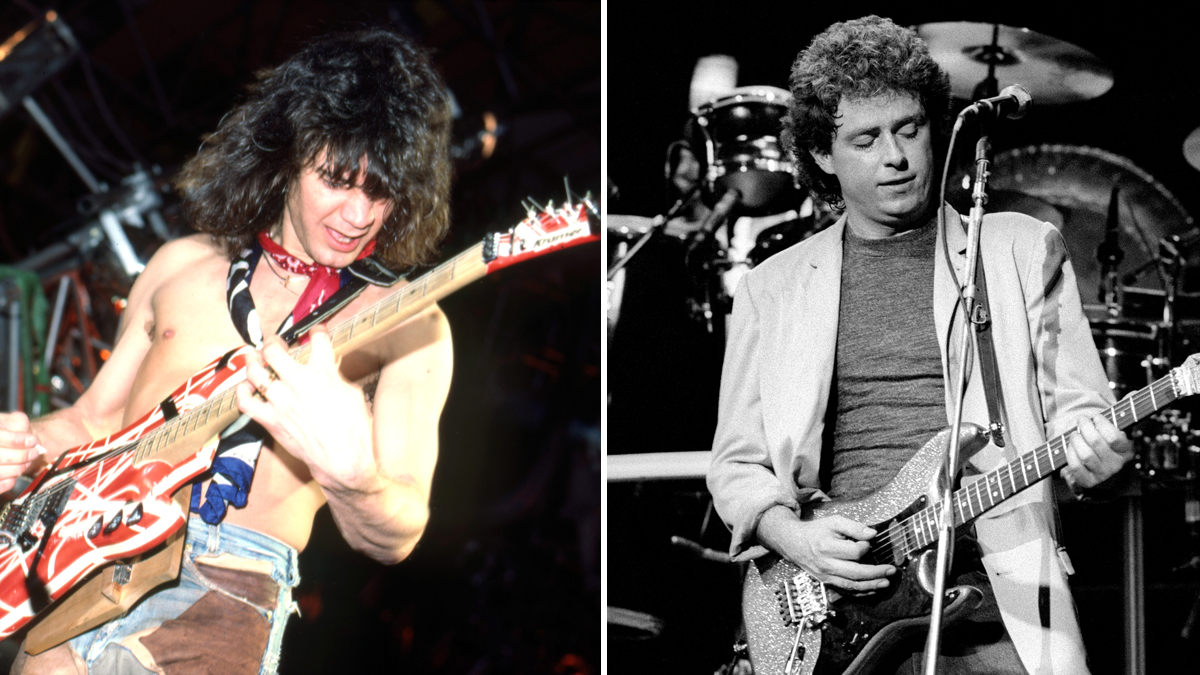
As far as cross-genre link-ups go, few – if any – can top Michael Jackson’s 1982 smash hit track Beat It, which partnered the King of Pop’s commanding vocals with the fretboard ingenious of not one, but two of the finest players to ever pick up an electric guitar.
Conceived by a Jackson intent on avoiding the anti-disco backlash that took hold at the onset of the ‘80s, Beat It sought to appeal to a broader listener base beyond the vocalist’s current crop of fans – and aimed to do so by bringing onboard Steve Lukather and Eddie Van Halen.
The pair’s involvement in the track is well-documented and near-legendary. Lukather, who was 24 years old at the time, took and tweaked Jackson’s original riff, and ended up playing all the guitars and bass guitars on the studio recording.
The one thing he didn’t record, though, was the solo, which was duly supplied by a peak-powered Eddie Van Halen. After making some alterations to the track’s structure – something Jackson later thanked him for – Van Halen then committed to tape one of the best guitar solos of all time.
In the final mix, both Lukather’s riffing and Van Halen’s wild soloing help carry the track, but when they’re stripped away from the wider instrumentation and deprived of Jackson’s vocals, the sheer accuracy and elite execution of the pair’s playing is even clearer to hear.
Thanks to audio that isolates Lukather and Van Halen’s respective guitar parts in relation to the track, that accuracy – as well as some more nuanced six-string contributions – can be heard in all its glory.
Lukather’s rhythm chops, which form most of the four-minute video, are as clean as it gets, with the panned audio highlighting the Toto man’s doubled-up opening riffing, the two-part verse passages and some ultra-clean, unprocessed decorative strums that pierce throughout.
Get The Pick Newsletter
All the latest guitar news, interviews, lessons, reviews, deals and more, direct to your inbox!
It also gives listeners a better insight into Lukather’s Beat It tone, which – after originally heralding from an assortment of Marshall guitar amps – was concocted using a Fender Deluxe with modest amounts of overdrive applied, as per producer Quincy Jones’ request.
At the 2:27 mark, Van Halen’s unaccompanied solo crops up, showcasing the two-hand tapped sorcery, whammy bar action and rapid alternate picking exchanges in pristine clarity. Not only is it an opportunity to hear Van Halen’s Beat It solo without distraction, it’s also a chance to get an up-close listen to the late guitarist’s surgical six-string accuracy and unrivaled soloing capabilities.
In fact, Van Halen’s contribution was so good, it gave birth to a long-held urban legend that the studio’s monitor speakers caught fire while Eddie was recording his solo. This turned out to be just a myth, but judging by the isolated effort, we further understand why it caught on as quickly as it did.
Though Van Halen’s contribution to Beat It has gone down in the annals of pop rock history, it took him less than an hour to record.
"I was just finishing the second solo when Michael walked in,” Van Halen once recalled. “And you know artists are kind of crazy people. We’re all a little bit strange. I didn’t know how he would react to what I was doing. So I warned him before he listened. I said, 'Look, I changed the middle section of your song.'
"Now, in my mind, he’s either going to have his bodyguards kick me out for butchering his song, or he’s going to like it,” he added. “And so he gave it a listen, and he turned to me and went, 'Wow, thank you so much for having the passion to not just come in and blaze a solo, but to actually care about the song, and make it better.'"

Matt is the GuitarWorld.com News Editor. He has a Masters in the guitar, a degree in history, and has spent the last 16 years playing everything from blues and jazz to indie and pop. When he’s not combining his passion for writing and music during his day job, Matt records for a number of UK-based bands and songwriters as a session musician.
“His songs are timeless, you can’t tell if they were written in the 1400s or now”: Michael Hurley, guitarist and singer/songwriter known as the ‘Godfather of freak folk,’ dies at 83
“The future is pretty bright”: Norman's Rare Guitars has unearthed another future blues great – and the 15-year-old guitar star has already jammed with Michael Lemmo









